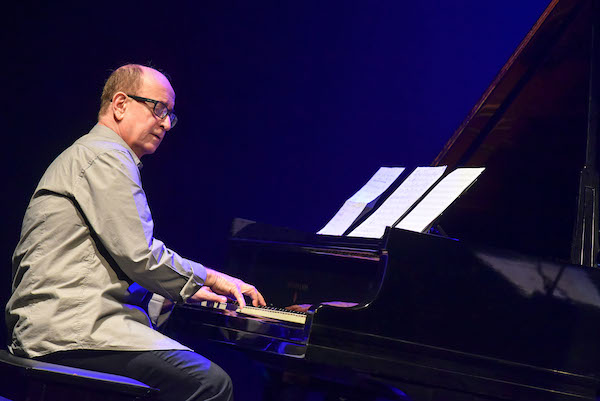Apr 2, 2024 12:59 PM
Saxophonist, Sonic Explorer Casey Benjamin Dies at 45
Casey Benjamin, the alto saxophonist, vocalist, keyboardist and producer who stamped his distinctive sounds on the…

Since they first met, pianist Antonio Adolfo has gone on to be one of the foremost bandleaders in Brazilian jazz, and Milton Nascimento became one of Brazil’s most essential and influential singers.
(Photo: Mirna Modolo)Two young musicians in Rio De Janeiro became friends and, briefly, collaborators back in 1967.
Antonio Adolfo, a 20-year-old pianist and Rio native, was leading a pioneering samba-jazz group called The 3-D Trio. Milton Nascimento, a largely unknown 25-year-old guitarist and singer who hailed from the small city of Tres Pontas in mountainous Minas Gerais, was in town to perform at the International Song Festival.
Since then, Adolfo has gone on to be one of the foremost bandleaders in Brazilian jazz, and Nascimento, of course, became one of Brazil’s most essential and influential singers. But in 1967, they both were trying to make a name for themselves.
“Milton is a genius,” Adolfo recently declared over the phone from Rio while discussing his latest release, BruMa (Mist): Celebrating Milton Nascimento.
The pianist fondly remembers hanging out at the home of songwriter brothers Marcos and Paulo Sérgio Valle with the soon-to-be star and others who became major figures in Brazilian pop, a group that included Roberto Menescal, Toninho Horta and Arthur Verocai.
“Marcos wrote a song called ‘Viola Enluarada’ that we recorded together—Marcos and Milton, backed by my 3-D Trio, with strings arranged by Dori Caymmi. The song became a hit,” Adolfo said. “Then we did a show at the Teatro Santa Rosa for two months that featured some of Milton’s songs like—‘Outubro,’ ‘Vera Cruz,’ ‘Travessia’ and ‘Tres Pontas.’ That was the only time I performed with Milton.”
Nascimento went on to claim 2nd prize in the song festival, launching his career in Brazil, and “Travessia”—with an English lyric by Gene Lees—eventually went on to become his first international hit.
Adolfo features “Outubro” and “Tres Pontas” on BruMa, as well as seven other Nascimento compositions, including “Nada Será Como Antes,” “Canção Do Sal” and “Cais.”
“I always thought about recording his songs,” Adolfo said. “It’s the combination of Milton’s voice, his arrangements, his playing, and his harmonic and rhythmic concepts. In the ’60s and ’70s, he brought some odd meters and modal ideas that he got from Miles [Davis] and Herbie [Hancock] and Wayne [Shorter]. Besides the modal thing, he did new types of [chordal] voicings on his guitar. It was all very modern, very original; nobody writes like him. That’s why jazz musicians like Wayne and Herbie love him: He is so jazzy.”

Benjamin possessed a fluid, round sound on the alto saxophone, and he was often most recognizable by the layers of electronic effects that he put onto the instrument.
Apr 2, 2024 12:59 PM
Casey Benjamin, the alto saxophonist, vocalist, keyboardist and producer who stamped his distinctive sounds on the…

“He’s constructing intelligent musical sentences that connect seamlessly, which is the most important part of linear playing,” Charles McPherson said of alto saxophonist Sonny Red.
Feb 27, 2024 1:40 PM
“I might not have felt this way 30 to 40 years ago, but I’ve reached a point where I can hear value in what people…

Albert “Tootie” Heath (1935–2024) followed in the tradition of drummer Kenny Clarke, his idol.
Apr 5, 2024 10:28 AM
Albert “Tootie” Heath, a drummer of impeccable taste and time who was the youngest of three jazz-legend brothers…

“Both of us are quite grounded in the craft, the tradition and the harmonic sense,” Rosenwinkel said of his experience playing with Allen. “Yet I felt we shared something mystical as well.”
Mar 12, 2024 11:42 AM
“There are a few musicians you hear where, as somebody once said, the molecules in the room change. Geri was one of…

Larry Goldings’ versatility keeps him in high demand as a leader, collaborator and sideman.
Feb 21, 2024 10:45 AM
Are you having any fun? Larry Goldings certainly is. Consider just two recent examples:
Scene 1: “If anyone had…